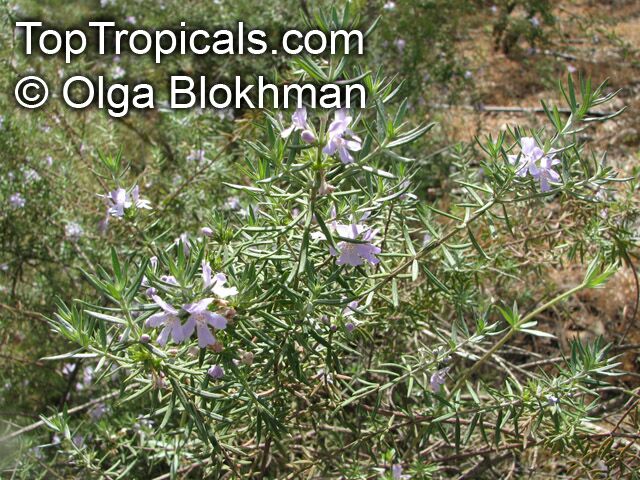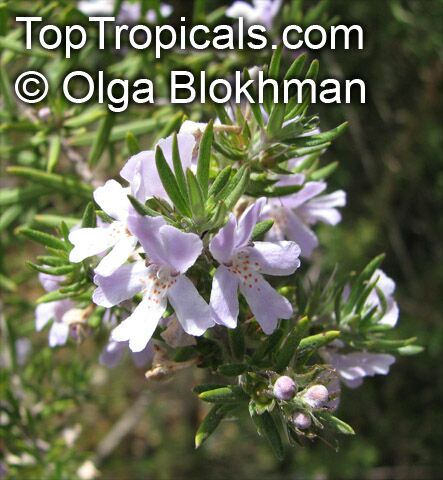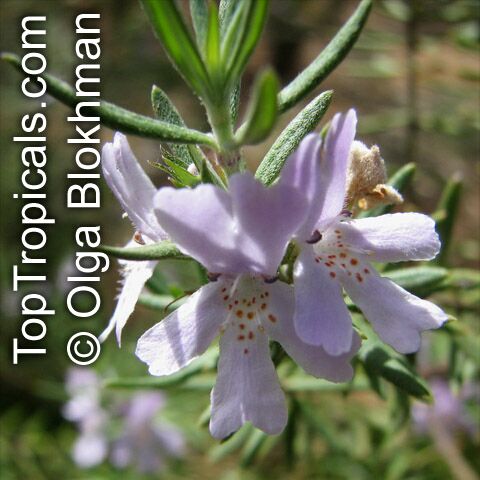Pictogram Guide · Mouse over pictogram for definition
Westringia fruticosa
Native Rosemary, Coastal RosemaryFamily: Lamiaceae
Origin: Australia









Westringia fruticosa is a large shrub, reaching peak height of five to ten feet tall, though she does spread wide at the base.
The plant thrives best in full sun, for at least six hours a day, and is also tolerable in part shade. Westringia fruticosa is a moderate water user during dry periods, but with careful management. It is also frost, drought, and seaside tolerant, making her ideal for areas that are prone to strong winds, strong salt, and wet periods. The plant is cold hardy in USDA Zones 9-11 at least to temperatures in the mid 30s°F for a short amount of time.
The flowers are one of the best attributes of this plant. The blossoms open as white and off-white, and as time goes by many will also take on shades of blue, lavender, and purple. The plant blooms from late fall to late spring, with occasional flowering in summer as well. The blooms attract butterflies and hummingbirds to the garden, making her a great addition to any wildlife garden.
For those looking to grow Westringia fruticosa in colder regions, the best suggestion is to start the plant in a pot, keeping it outside only when the temperature is above freezing. Make sure it is in full sun and located in an area free of drafts. Make sure to keep your plant well-watered, especially during dry and hot spells. With the correct amount of care and attention, Westringia fruticosa will thrive in your garden.



